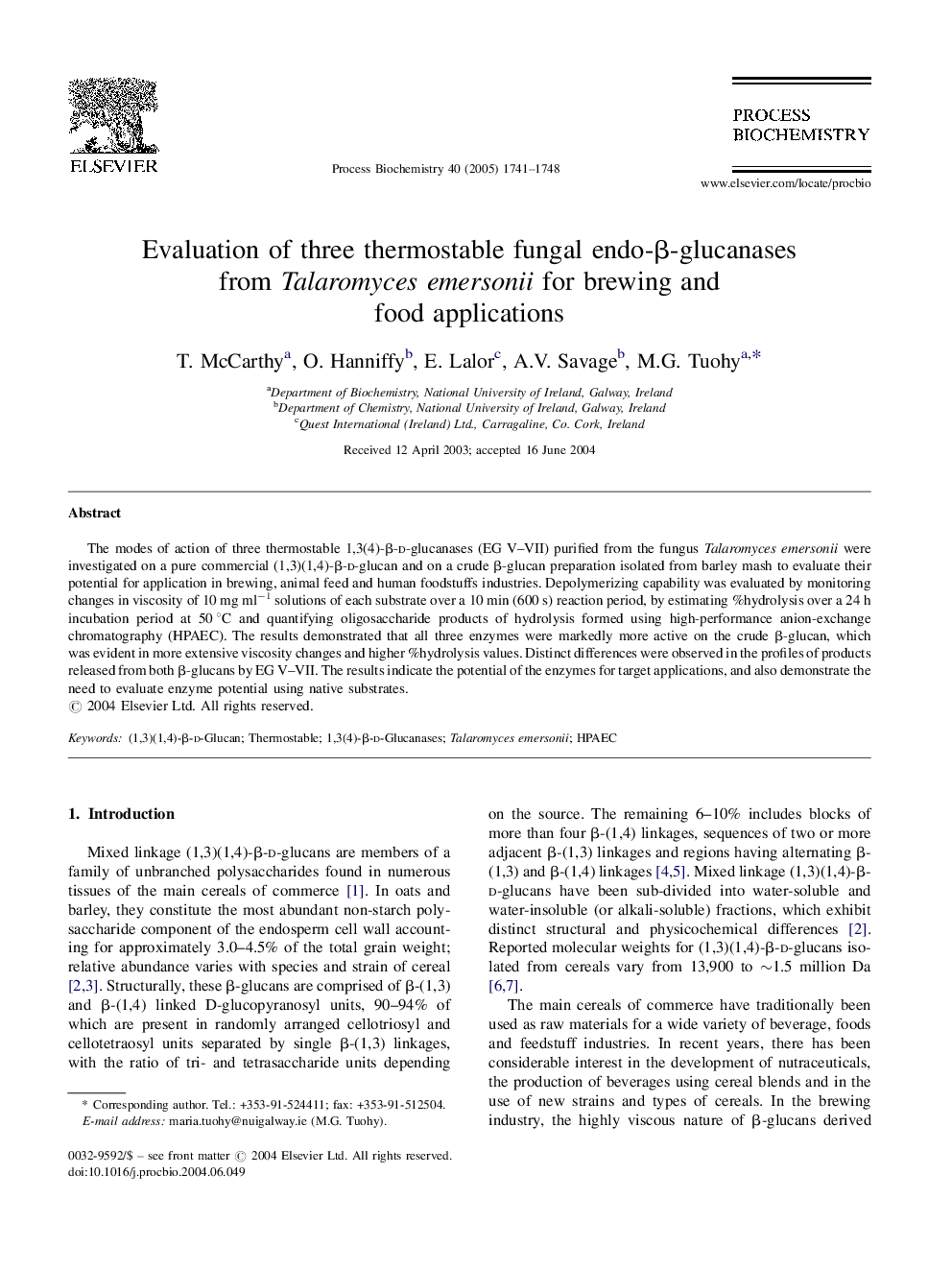| Article ID | Journal | Published Year | Pages | File Type |
|---|---|---|---|---|
| 10236402 | Process Biochemistry | 2005 | 8 Pages |
Abstract
The modes of action of three thermostable 1,3(4)-β-d-glucanases (EG V-VII) purified from the fungus Talaromyces emersonii were investigated on a pure commercial (1,3)(1,4)-β-d-glucan and on a crude β-glucan preparation isolated from barley mash to evaluate their potential for application in brewing, animal feed and human foodstuffs industries. Depolymerizing capability was evaluated by monitoring changes in viscosity of 10 mg mlâ1 solutions of each substrate over a 10 min (600 s) reaction period, by estimating %hydrolysis over a 24 h incubation period at 50 °C and quantifying oligosaccharide products of hydrolysis formed using high-performance anion-exchange chromatography (HPAEC). The results demonstrated that all three enzymes were markedly more active on the crude β-glucan, which was evident in more extensive viscosity changes and higher %hydrolysis values. Distinct differences were observed in the profiles of products released from both β-glucans by EG V-VII. The results indicate the potential of the enzymes for target applications, and also demonstrate the need to evaluate enzyme potential using native substrates.
Related Topics
Physical Sciences and Engineering
Chemical Engineering
Bioengineering
Authors
T. McCarthy, O. Hanniffy, E. Lalor, A.V. Savage, M.G. Tuohy,
